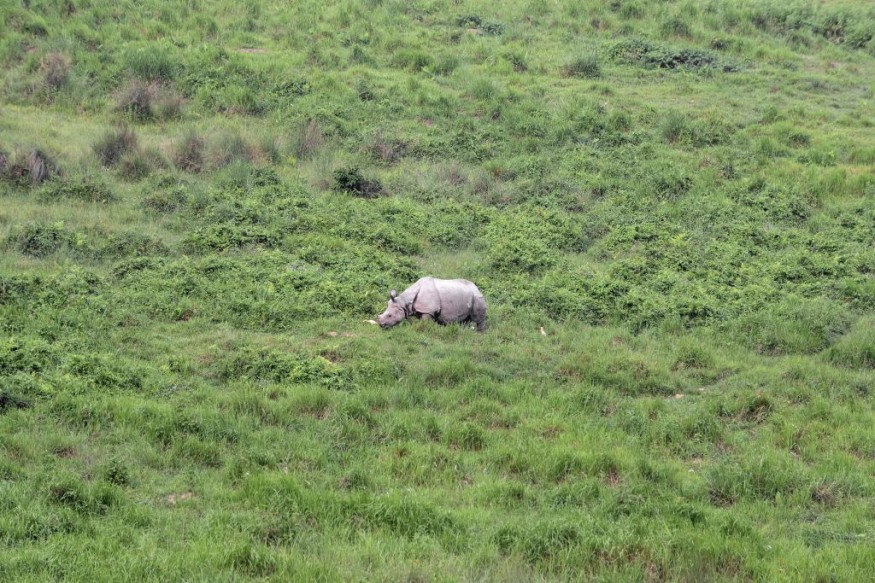
A new study suggested that the growth of grasslands may not have been the primary force behind mammal evolution in Africa through the late Cenozoic (Plio-Pleistocene, around 5.3 million years ago), including that of the progenitors of modern humans.
Mammal groups' spatial ranges would likely have been impacted by vegetation changes as they adapted to their surroundings; in extreme situations, this might have resulted in extinctions and the emergence of new species.
Kathryn Sokolowski, a PhD student at the University of Utah, and colleagues focused their research on how much the vegetation has to alter in order to trigger such substantial responses.
58 herbivorous species examined
The research team modeled 58 contemporary herbivorous species were examine how they responded to shifts in the amount of woody cover provided by trees and shrubs in 123 African parks and nature reserves.
This was based on data on the presence and absence of several species, including cheetahs, impalas, hartebeest, squirrels, wildebeest, otters, porcupines, mongooses, jackals, zebras, monkeys, wildcats, bushbabies, giraffes, and hippos, as well as vegetation cover as determined by satellites.
The study specifically included the dietary preferences of four different groups of mammals: grazers (eating mainly grasses and herbaceous plants), browsers (eating leaves and twigs of trees, shrubs, and herbs, as well as some wild fruits), frugivores (eating fruits, nuts, and seeds, as well as plant roots and shoots), and mixed feeders (eating a combination of the aforementioned).
The findings, which were reported in Palaeogeography, Palaeoclimatology, and Palaeoecology, show a preference for environments with 0.5 mean fraction woody cover (fwc), which measures the area of trees and shrubs in relation to grasses, herbaceous vegetation, and unvegetated areas. Fewer species favoured closed (>0.7 fwc, with forest being >0.8 fwc) as opposed to open (0.3 fwc) settings.
The measures combine specific types of vegetation, such as forest with bushland and grassland with deserts on scales of 100-1,000 km2, without taking into account the exact height of the vegetation. Nevertheless, Sokolowski and colleagues are able to determine that the growth of grasslands through the late Cenozoic may not have been a substantial factor effecting mammal speciation and extinction in that time period.
Only four species-gemsbok, springbok, red-fronted gazelle, and mountain zebra-expressed a clear preference for an open lifestyle in the models, and it is highly likely that these four species will decline as woody cover rises.
On the other hand, 11 species, including duikers and several antelope, showed a drop in chance of occurrence with a change from confined woodland to open grassland.
Meanwhile, 22 species showed minimal sensitivity to shifting vegetation cover, including warthogs and bush elephants, and 21 species fell within the medium range of grassland and forest cover (0.4-0.6 fwc), including impala, buffalo, and wildebeest.
Although browsers, grazers, and mixed feeders appeared to favor mixed grassland and forest habitats, frugivorous species, which peak inside areas of high woodland cover, were similarly affected by dietary preference.
Savannah Ecosystem
The research team comes to the conclusion that savannah ecosystems are the most likely ecosystem to have proliferated in the late Cenozoic, with grass carpeting a large proportion of the landscape and shrubs and trees interspersed.
This is because grazers, browsers, and mixed feeders predominate in the unimodal range of both grassland and woodland.
Such environments were probably very vulnerable to annual precipitation, which could change the vegetation towards more arid conditions, reducing growth productivity to support large herbivores needing large amounts of food, or too much rain, diluting the plant nutrients to support smaller mammals needing less but higher quality food.
This explains why browsers are absent from wooded woods (>0.8 fwc) and open grassland (0.2 fwc).
By relating contemporary communities to paleontological research, Sokolowski and colleagues argue that fossil evidence cannot be entirely relied upon to recreate historical landscape changes because it is only likely to represent a snapshot of the community averaged across a vast area.
The findings warn against utilizing certain fossils as "indicator species" when performing paleoecological reconstructions of mosaic ecosystems.
Related Article : Dwarf Hippos Once Lived Madagascar Forests Not Grasslands, Study Says
Related Video:
© 2025 NatureWorldNews.com All rights reserved. Do not reproduce without permission.





